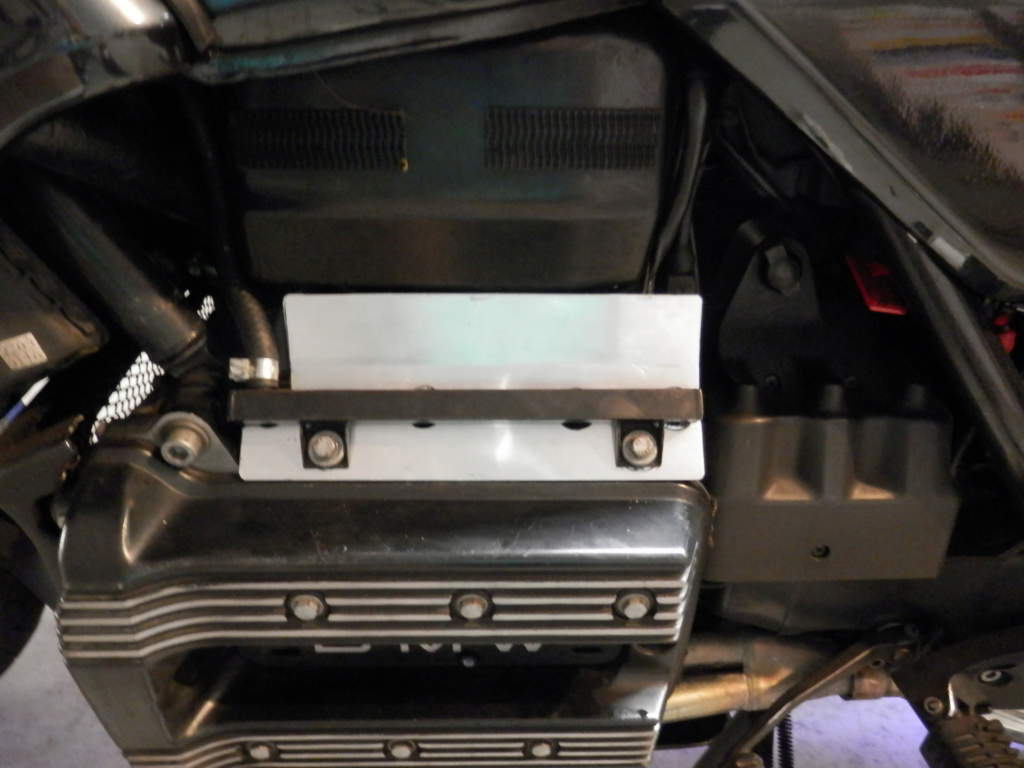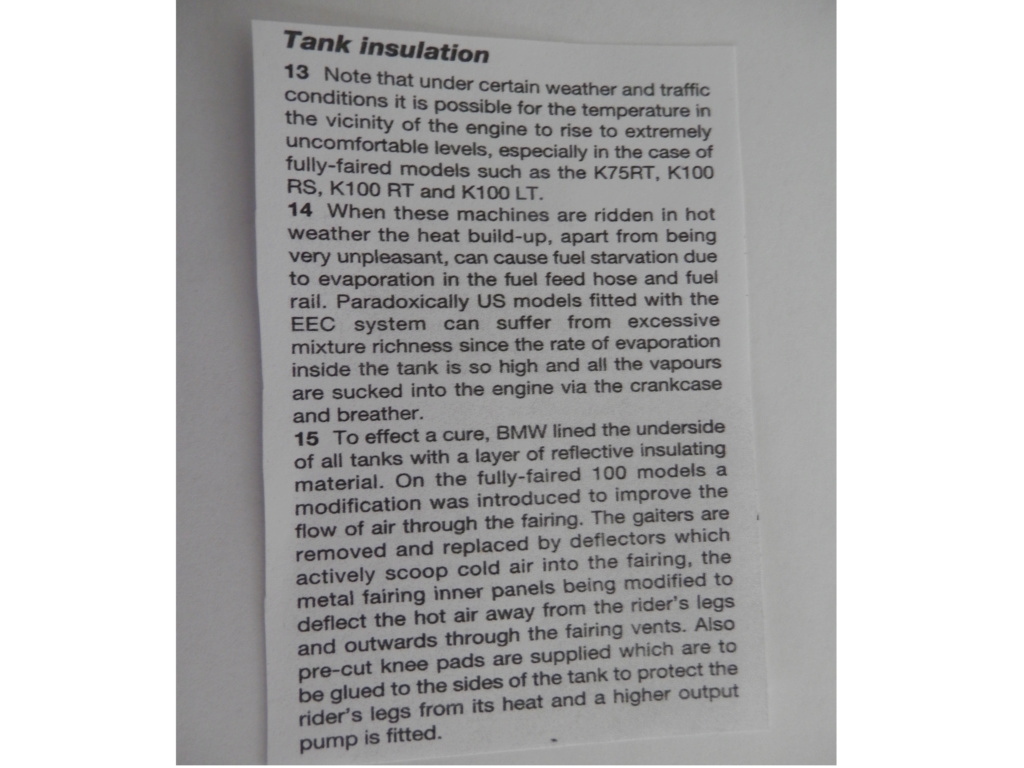MartinW wrote:...The source of heat in the engine comes from the combustion of fuel in the cylinder head. Besides the injectors which are partially insulated from the rail ( no metal to metal contact) the main entry of heat into the fuel has to be via the fuel rail. If you insulate the FPR and the lines and shield or insulate the rail you should eliminate most of the sources of heat entering your fuel system...And I could be mistaken but weren't some Bricks at some stage fitted with insulation over the fuel rail. Not sure whether this was OEM or aftermarket.
Regards Martin.
Martin,
Interesting post...
On my K100LTs (2 + donor), all the fuel rails are insulated, so I suspect that this is an OEM fit as standard. These are all European models, so not designed for running in especially hot climates. The insulation is easier to see in the pics of the fuel rail off my donor bike (yes, it is awaiting the paint treatment).
The insulation effectively wraps 3 sides of the rail and just clips around the bottom side (about 3-4 mm thick).
Pic 1: Underside (uninsulated)

Pic 2: Fuel rail top side (held in as-fitted orientation with those come in handy ear plugs)
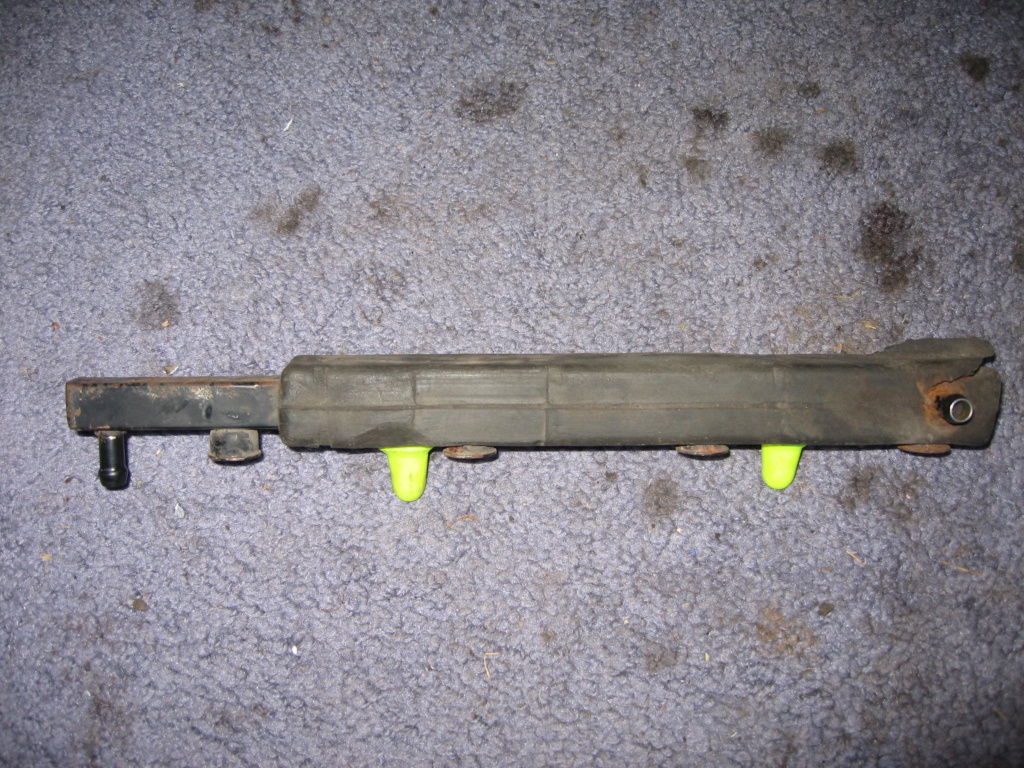
Pic 3: Outboard side (furthest from engine)
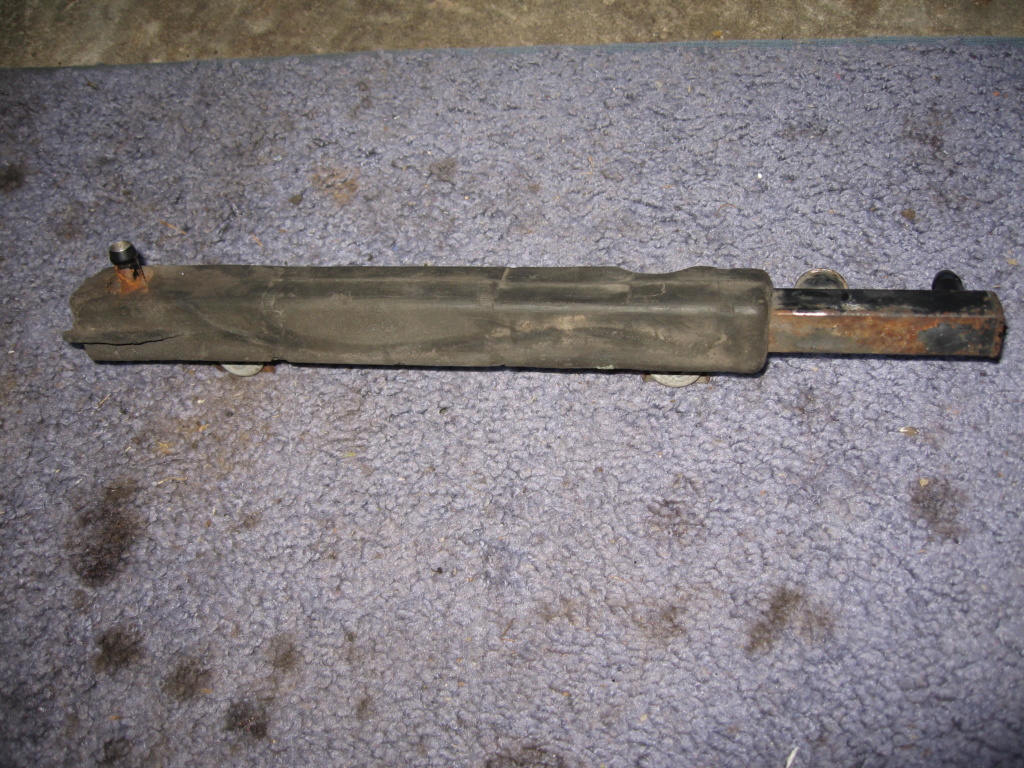
Pic 4: Underside of rail (held in vertical orientation)
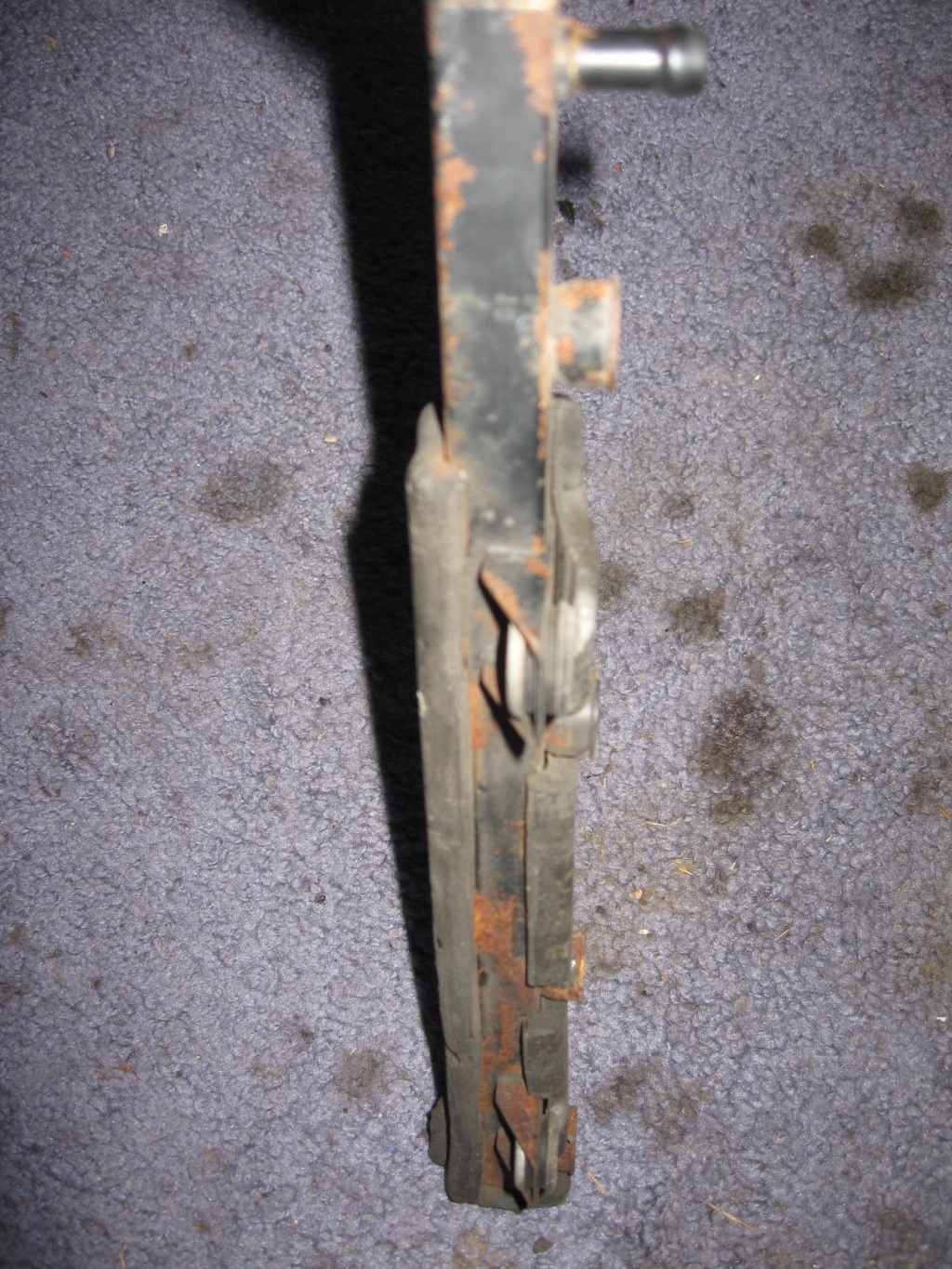
...and a few blurry pics
Pic 5: As fitted. Aft end of fuel rail not insulated and external to fairing lower assembly)

Pic 6: Centre section of fuel rail as viewed between lower left rear fairing vent
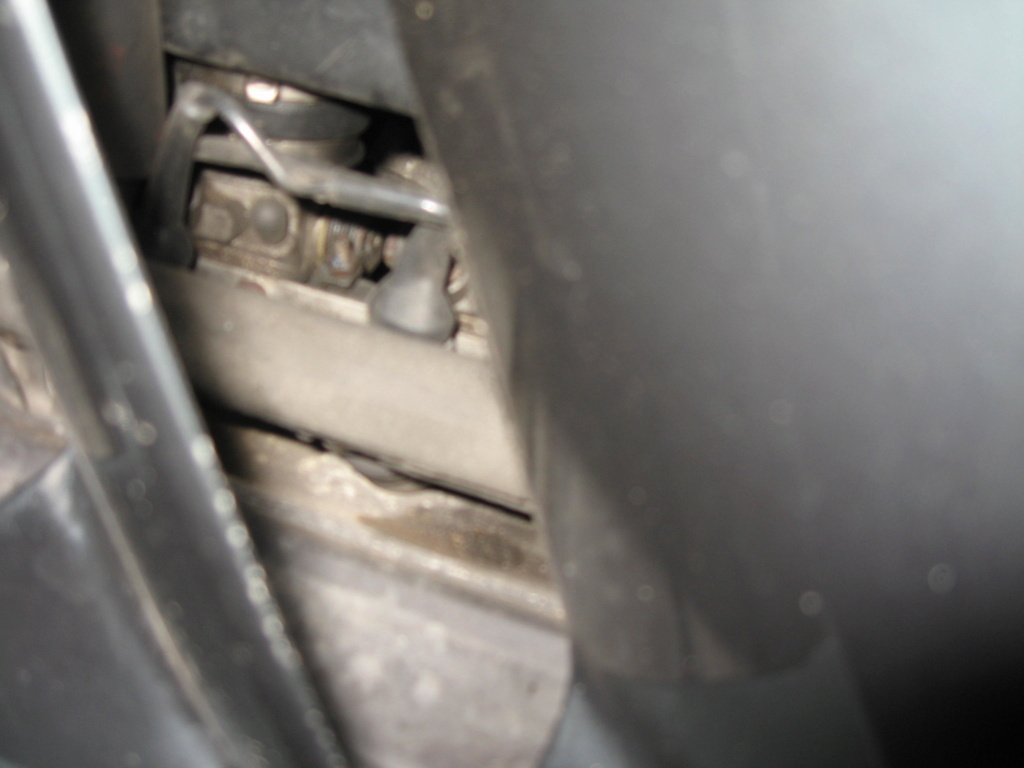
Pic 7: Fwd end of fuel rail as viewed through front left fairing vent
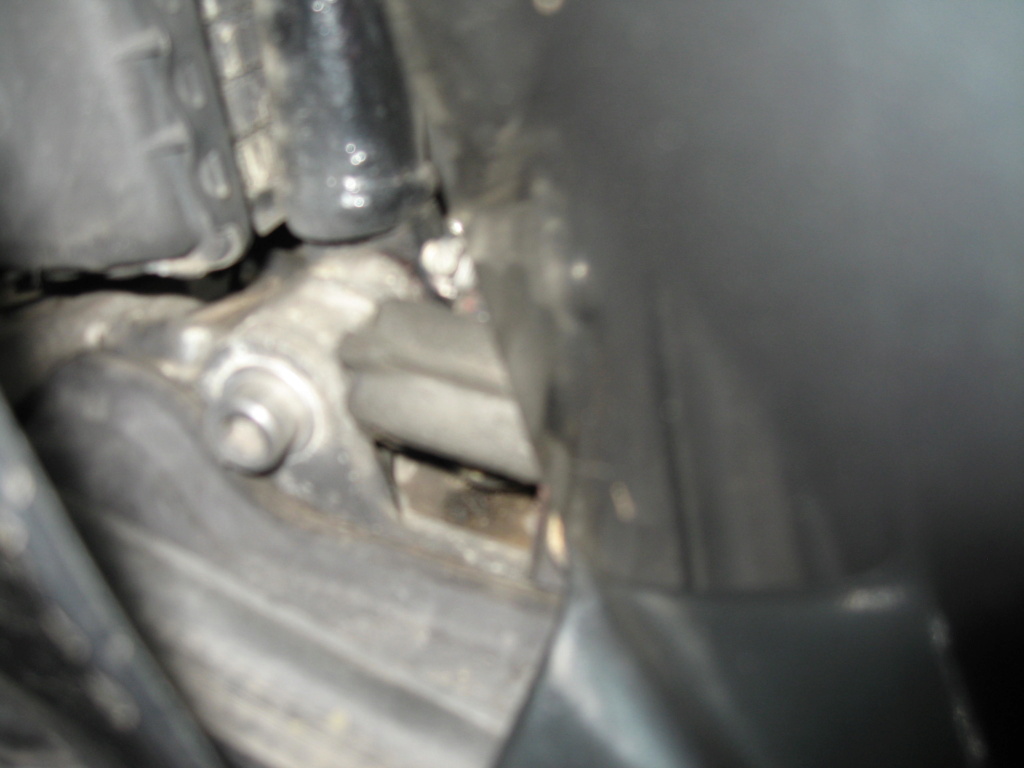
It makes sense that the heat in the fuel is being picked up as it is circulated through the fuel rail. The fuel pump and Fuel Pressure Regulator should ensure that the fuel rail is always full of fuel under pressure, which either is squirted into the cylinders when the fuel injectors open and burns (creating power and waste heat from combustion) or is sent back to the fuel tank via the return line. Once the engine block is up to normal temperature, with little natural air cooling (particularly on fully faired bike) in the vicinity of the fuel rail, it is not surprising that the fuel rail also heats up - mostly though convection (being surrounded by hot air) rather than by conduction (metal to metal contact) as the two mounting bolts are insulated from the fuel rail (as shown in blurry pic 4 above) and, therefore, the fuel within the fuel rail will also heat up. The now heated surplus fuel returns to the fuel tank where it will mix with the, initially cooler, bulk volume. After a period riding, the temperature of the fuel in the tank will start to increase due to the constant flow of hot fuel back to the tank - and the longer you ride, the volume of fuel in the tank will steadily reduce, which means the remaining fuel is going thorough the pump-rail-return cycle more frequently and therefore getting steadily hotter. Of course it can never get hotter that the engine block temperature, but that is unpleasantly hot and this will be noticed by the rider as the fuel tank starts getting above 45 deg C.
Here in the UK (as evidenced by Audi Bobs post on burnt London legs), we have had an unusually hot spell of weather this summer - typically 27-32 deg C and, even with insulated fuel rails, I have noticed the fuel tank heat through my normal riding gear (with winter thermal layer removed) and the tank is physically very warm to the touch and it certainly gets more noticeable when down to less than half a tank of fuel. I appreciate that these temperatures are nothing compared with those experienced down under - for most of the year, but the fuel heating effect is still noticeable. In the winter, of course, it is a bonus!
So what has your add on device achieved? I suspect that it is acting more as a heat shield/baffle than a cooling fin - i.e it is simply channeling the wild heat from the engine block away from the fuel rail so the fuel rail doesn't get quite so hot, rather than taking the heat from the fuel rail. If that is the case - painting it matt black would actually make it less effective as it would probably absorb more heat from the engine (unless you had it shiny on the inside to reflect the engine heat and matt black on the outside to absorb any convected heat from the fuel rail - although, in hot climes, matt black could add an unwanted solar heating effect to the fuel rail, especially if the lower fairing has been removed).
So what's the solution? The add on return line fuel cooler is a good option (as per Rick & Charlies set ups) for physically reducing the fuel temperature before it goes back to the tank. Screening/insulating the fuel rail is a must-do to try and reduce the convected heat heating up the fuel rail. Also worth checking that the insulating arrangements for the fuel rail mounting points are in good shape - if a previous owner has removed them and allowed a metal to metal contact, you will definitely have a much worse problem!
I guess this is always going to be a problem with fuel injection - constantly churning fuel around a system until it eventually gets burnt. You wouldn't have this problem with carbs (but plenty of other problems instead). Net result is the whole fuel system steadily heats up as you ride.
The bit that still puzzles me though, is your symptoms of the bike dying (and nearly getting rear ended) when riding in hot conditions. You put this down to the fuel vaporising (in the fuel rail?) and therefore starving the engine of fuel. ("
but the main problem was vaporization from riding in stop go traffic in Queensland summer days 30C+"). The fuel pump and FPR are designed to keep the fuel rail constantly full off liquid fuel - hence you should not be getting vaporisation within the fuel rail. As Bob T mentioned, the boiling point of liquids increases with increasing pressure (this is how we operate pressurised water nuclear reactors - substantially increasing the water pressure increases the temperature at which the water boils and therefore we can keep it in the liquid phase at temperatures well in excess of the normal boiling point of water which is better for removing the thermal energy from the fuel and provides more energy to heat a secondary water supply to create steam for power turbines). So, if you are getting vaporisation in your fuel rail, that suggests to me that you have some other problem over and above just the fuel heating issue.
As suggested in previous posts, the boiling point of petrol is typically about 95 deg C at ambient pressure (1bar) but individual components that make up your particular blend of petrol will boil at lower and higher temperatures. I recall that the FPR controls the fuel rail pressure at just over 2 bar (36 psi), so this will probably increase the petrol boiling point to something like 115 deg C. Therefore, unless you are getting really hot...it is unlikely that the petrol will be vaporising in the fuel rail. Are you running at a reduced pressure (FPR problem?) - that would certainly exacerbate your problems and give poor running. The other option is have you started using a different grade/brand of fuel? If your particular grade has a higher level of components with lower boiling points, then you could experience vaporisation of these components at much lower temperatures which could cause vapour locking of fuel lines or the fuel pump impeller - both of which will effectively interrupt your fuel supply temporarily. Another thought, have you fitted an after market fuel pump that has a higher volumetric flow rate - i.e. churns the fuel around the system quicker than the OEM pump (net result, even more heated fuel going back to the fuel tank by the return line than normal - offset to a degree by less stay time in the hot zone of the fuel rail)
Sorry - rambled on long enough and I've probably confused more than helped!


 Overheating Fuel Solution Mk1 & New Improved Mk2. Mon Jul 30, 2018 1:00 am
Overheating Fuel Solution Mk1 & New Improved Mk2. Mon Jul 30, 2018 1:00 am














